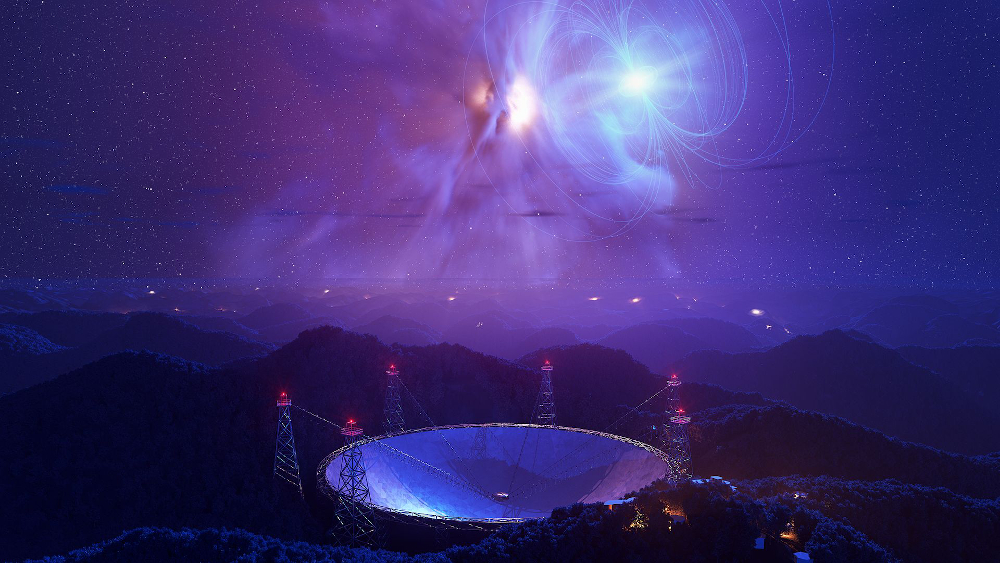
 Credit: D. F. Torres, S. Weng, K. Rappaport, Science Communication Lab
Credit: D. F. Torres, S. Weng, K. Rappaport, Science Communication Lab
Finding a Pulse in a Dead Star
It's somewhat of a mystery how heavy elements like gold are created in the Universe. Lighter elements can be cooked up in the centers of stars by combining simple nuclei into more complex ones. Stellar explosions can produce even more complicated nuclei. But gold, it turns out, is hard to explain by any of these fairly well understood mechanisms, and apparently requires even more extreme methods. Scientists currently think that gold and other complex atoms are created through the the collisions of neutron star binary systems. Such systems start out as gravitationally bound massive stars (each star having a mass in excess of about 8 times the Sun's mass). Through the course of normal stellar evolution each star will in turn run out of nuclear fuel and explode as a "core-collapse" supernova, leaving behind a compact object, which, if the explosion is not too violent, can remain gravitationally bound in orbit around its companion. The compact object can be a neutron star, or, if the exploding star was especially massive, a black hole. These binaries gradually lose orbital energy due to the emission of gravitational radiation, and will eventually spiral together. If the compact objects in the binary are both neutron stars, the extreme violence of their merger produces a neutron-rich environment just right for creating heavy elements like gold. We've actually witnessed this happen in August of 2017, an event called the "golden merger" by scientists. An especially interesting massive binary is the system known as LSI +61 303. This binary contains a rapidly spinning massive star surrounded by a disk of matter flung off the star's surface. The massive star is orbited by a compact object produced by the supernova of a normal massive companion star. The system is unusual because it produces bursts of gamma rays and X-rays when the compact object splashes through the disk. The identity of the compact object was a mystery for over 40 years, but has now been solved thanks to observations with China's Five-hundred-meter Aperture Spherical radio Telescope (or FAST), the world's second largest telescope. These FAST observations discovered transient, sub-second radio pulsations from the compact object. The discovery of these pulsations confirm that the mysterious compact object was in fact a neutron star, indeed a magnetar, a neutron star with a extremely strong magnetic field. It's unclear whether this system will eventually form a neutron star binary merger - but it bears watching.
Published: March 28, 2022
<
HEA Dictionary ● Archive
● Search HEAPOW
● Other Languages
● HEAPOW on Facebook
● Download all Images
● Education ● HEAD
>

Each week the HEASARC
brings you new, exciting and beautiful images from X-ray and Gamma ray
astronomy. Check back each week and be sure to check out the HEAPOW archive!
Page Author: Dr. Michael F. Corcoran
Last modified Monday, 26-Feb-2024 17:22:14 EST


